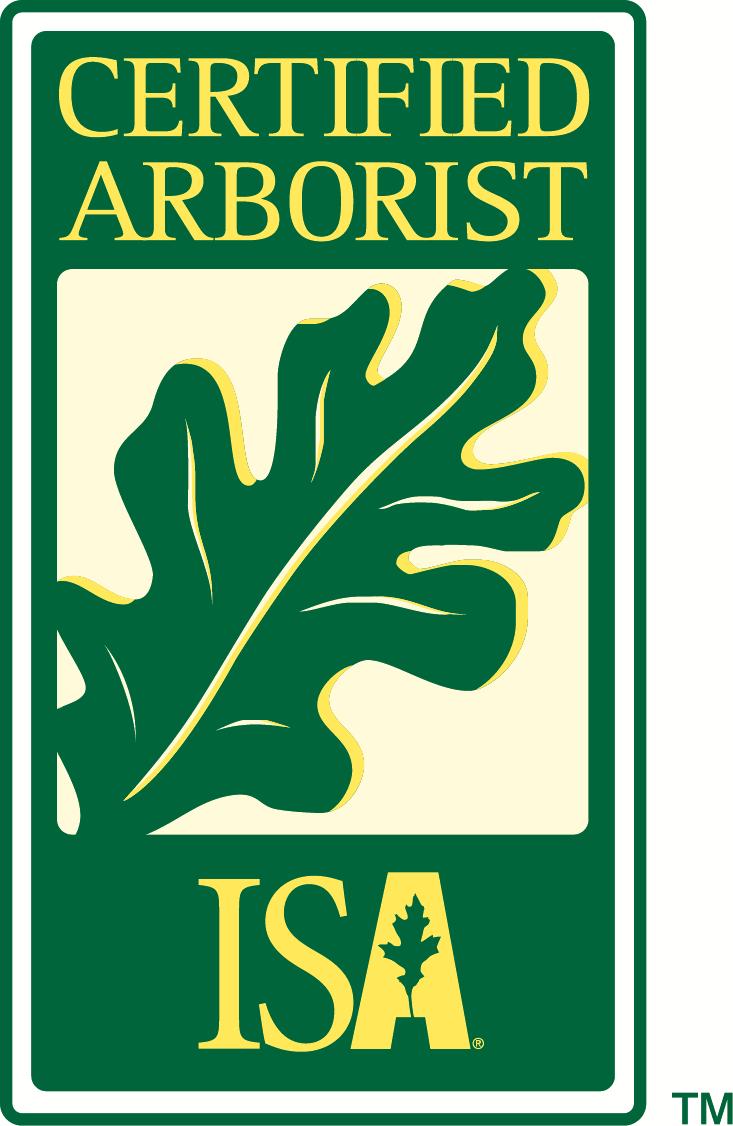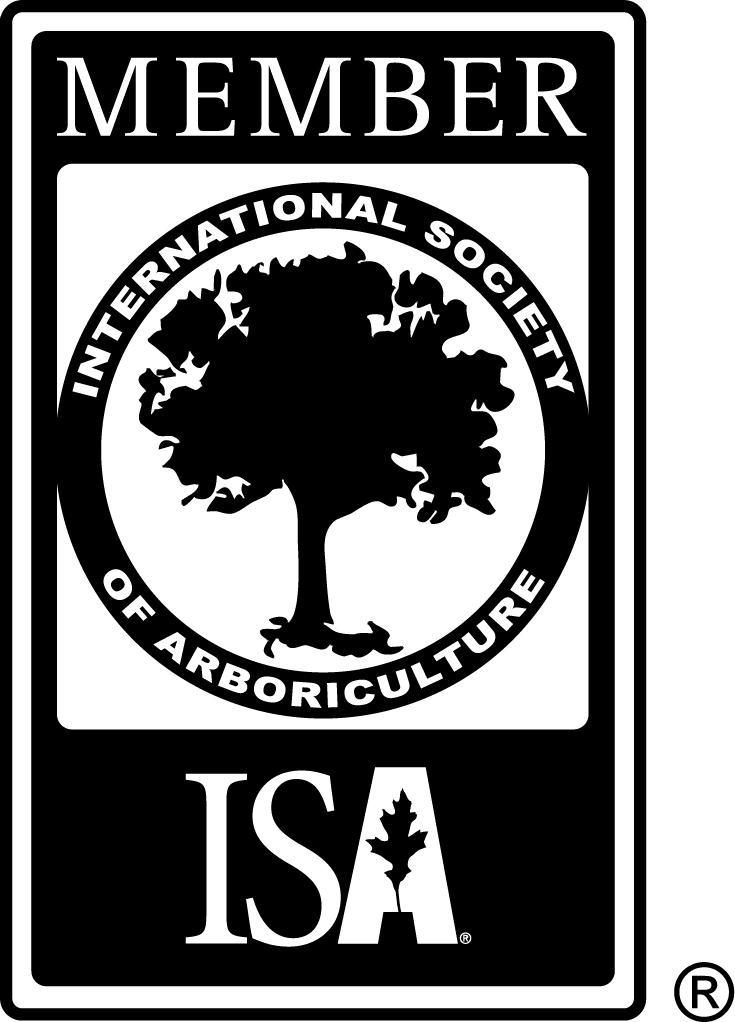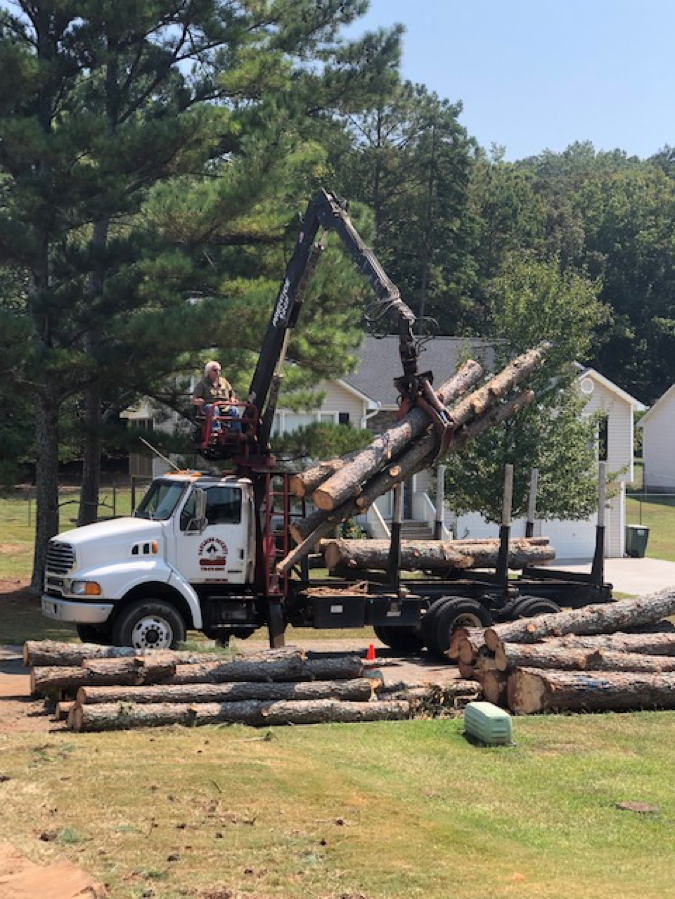WHAT TO EXPECT ON A TREE REMOVAL JOB:
DURING THE ESTIMATE:
We recommend that you should be home for the initial estimate. Here is some basic information that we rely on to come up with the quotes:
- Correctly identifying the trees for trimming or removal. If you are not at home during the estimate you could mark the trees either with spray paint or tape. We usually use red for removals and green for trimming but you could use other colors as long as you tell us which trees are to be removed and which ones are to be trimmed.
- Identifying the easiest and safest EXIT routes that will be least impactful to the property
- Determining if there are any utilities, underground pipes or wires in the working zone
- Getting access/permission from the neighbor/s to remove/enter their property for any overhanging limbs/branches
- Determine if the client wants to keep the wood and/or wood chips
- Explaining the potential removing options and implications for each method of removing (see below)
- Checking for correct information/contact information
- Explaining payment methods
- The estimator will complete a visual inspection of the work site
Note: Fellow Tree reserves the right to change the price on the estimate according to the conditions encountered during the job such as decay of the tree, shift of the trunk/tree during the removal process or other factors that are making the climbing or rigging unsafe.
Average times for estimates: 15-20 minutes
TRIMMING JOBS AND WHAT TO EXPECT
Unless it is a Japanese maple, a dog wood or a crepe myrtle most of the trimming jobs that involve large trees over the house require climbing of the tree and rigging. On most of the trees we have no issues rigging them off the house but if the branches are already touching or laying on the roof already, here are some of the things that you should expect during this process:
- You might hear some noises on the roof as we are setting our ropes to climb. This is nothing to be worried about as it usually caused by a ropes brushing against the roof/side of the house.
- A thud on the roof - mostly caused by a throw ball. This is a very common way to set up ropes in the tree. A throw ball is a weighted bag anywhere between 10-14 Oz. Most of the time this does not happen but even if it does the impact is not strong enough to damage the roof.
- If the branches are already sitting on the roof and there are no higher rigging points you will hear some brushing noise on the roof. For these types of branches this is sometimes inevitable unless you are assisted in removing this branches by a crane.
REMOVAL JOBS AND WHAT TO EXPECT
Depending on how many trees have to be removed we might choose to use dump trailer in combination with a chipper, use a logging truck or a dumpster. For just a few medium size trees we usually use our chipper and trailer to shred the branches and then remove the bigger pieces of wood. If there is enough space in the work zone then the trees can be logged into 10-12' sections. These logs are usually stacked on the road or in the front yard where they can be picked up by a logging truck within a day or two after the job is completed. Sometimes, we can arrange the pickup on the same day.
For large size jobs and/or for very large trees (usually larger than 30") we might use 30 yard dumpsters to chip branches and to put large pieces of wood that cannot be logged.
Here are some precautions the owner should take before the job starts
- Inform the estimator where sprinkler heads/pipes, underground wires or invisible fences are located. This are most important for jobs where the trees are being logged out.
- Inform neighbors that tree work is going to be done and ask permission for access on their property or sometimes placing logs on the road in front of their property. Sometimes, depending on the configuration of the road, yards logs might have to be placed in front or on your neighbors property (this is when you really know what kind of neighbors you have)
- Keep pets inside the house while the work is being completed
WHAT THE OWNER SHOULD EXPECT FOR LARGE JOBS WHERE LOGS CAN BE TAKEN OUT:
- A short walk through the job site to confirm all the items that were quoted
- Once the items were confirmed the crew will start setting up for removal or trimming of the tree
- A mini skid steer will be used to remove the logs.
- Fellow Tree uses plywood to protect grass sections of the yard. However the use of plywood is not suitable for all types of yards. For inclined sections of the yard as the skid steer can slip on it while carrying a load.
- Even when using plywood some impact on the lawn might occur as additional turns are needed due to the topography of the terrain, exiting angles or log weight that might require increased leverage and repositioning of the loader.
- Turning the loader on the driveway/sidewalk will result in temporary black rubber marks on the driveway. These marks will wash off with the first rain.
- Sometimes due to their size some logs cannot be lifted and will have to be dragged to the street. The friction between the concrete and the wood will create some temporary marks on the driveway as well but they will also fade off with rain and while driving over it.
- Section of fences/gates might have to be removed. Fellow Tree will put the fence panels back after completing the job. However, expect some of these panels (especially on older fences) not to fit exactly in the same spot and they might have to be a little higher or lower. Also, dragging logs might cause some minor trenching of the dirt or gravel in which case the fence panel when installed back on might look like it is sitting higher.
- Dropping logs can be an easier and chipper way to take out trees but there are certain disadvantages to it. Sometimes the trees can be brought down in a "slow-motion" drop but this is not always possible. The branches will also absorb some of the impact of the fall but sometimes branches will break and impale the ground. Dropping sections of wood will also make holes in the ground. Rigging every piece of the tree is has the lowest impact on the yard but it is also more expensive as it takes more time.
WHAT TO EXPECT AFTER THE TREES ARE REMOVED
- The customer should be at home to inspect the site and see if the trimming or removal was done to their expectations.
- The crew will begin the clean up process and packing of tools
- For logging jobs crewmembers will come back after the logs are being picked up by the logging truck as there is always debris left behind.
- Dumpsters usually get picked up in a day or two after the completion of the job unless the job was done on a Friday. In a situation like this the dumpster will get picked up usually on a Monday. For jobs like this it would be a good idea to discuss with your neighbors to inform them about how long will the job last and when the dumpster is going to be picked up.
Stump Grinding Process














